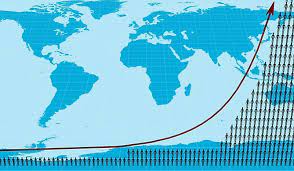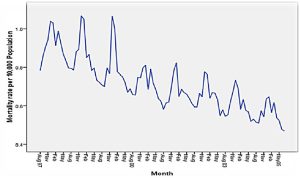Brazil, a vast and diverse country in South America, is known for its vibrant culture, stunning landscapes, and bustling cities. With a population exceeding 200 million people, Brazil ranks among the most populous nations globally. The reasons behind Brazil’s high population are multifaceted, stemming from historical, socioeconomic, and demographic factors. In this article, we will delve into the key drivers contributing to Brazil’s population growth and explore the implications of this trend.
Historical Influences:

Brazil’s population growth can be traced back to its colonial past, marked by extensive European colonization and the transatlantic slave trade. Portuguese explorers arrived in Brazil in the early 16th century, establishing sugar plantations and exploiting indigenous labor. The importation of African slaves further bolstered Brazil’s population, laying the groundwork for a diverse and multicultural society.
High Birth Rates:

One of the primary drivers of Brazil’s population growth is its historically high birth rates. Cultural norms, religious beliefs, and limited access to family planning services have all contributed to larger family sizes, particularly in rural areas and among lower-income populations. While fertility rates have declined in recent decades, Brazil continues to experience natural increase due to its youthful population profile and residual high birth rates.
Decline in Mortality Rates:

Advancements in healthcare, sanitation, and disease control have led to a significant decline in mortality rates across Brazil. Improved access to healthcare services, vaccination programs, and public health initiatives have contributed to lower infant mortality rates and increased life expectancy. As a result, more Brazilians are surviving into adulthood and old age, contributing to population growth through natural increase.
Urbanization:
Brazil has undergone rapid urbanization over the past century, with millions of people migrating from rural areas to cities in search of better opportunities and a higher standard of living. Urban centers such as São Paulo, Rio de Janeiro, and Brasília have experienced explosive population growth, fueled by job opportunities, infrastructure development, and access to services. While urbanization has brought economic opportunities, it has also led to challenges such as overcrowding, informal settlements, and strains on infrastructure.
Immigration:
In addition to internal migration, Brazil has also attracted immigrants from other countries seeking economic opportunities and a better quality of life. European, Asian, and Middle Eastern immigrants have settled in Brazil over the centuries, contributing to the country’s cultural diversity and demographic growth. While immigration to Brazil has slowed in recent decades, the country remains a destination for migrants from neighboring countries such as Bolivia, Paraguay, and Venezuela.
Implications and Challenges:
While Brazil’s population growth has brought economic opportunities and cultural enrichment, it also presents challenges in areas such as healthcare, education, infrastructure, and environmental sustainability. Meeting the needs of a growing population requires investments in healthcare services, education, and social programs to ensure equitable access to opportunities and improve quality of life for all Brazilians. Additionally, addressing urbanization-related issues such as housing, transportation, and environmental degradation is crucial for sustainable development and the well-being of future generations.
Conclusion:
Brazil’s high population is the result of a complex interplay of historical, demographic, and socioeconomic factors. From centuries of migration and settlement to high birth rates and declining mortality rates, numerous factors have contributed to Brazil’s demographic growth and diversity. As Brazil continues to navigate the challenges and opportunities of a growing population, strategic planning, investments, and policies will be essential to ensure a prosperous and sustainable future for all Brazilians.


